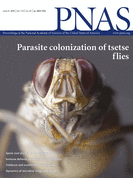 A PNAS paper that caught the media’s attention for suggesting that adding silk could stabilize vaccines and antibiotics has been pulled after the authors realized there were significant errors in the data analysis.
A PNAS paper that caught the media’s attention for suggesting that adding silk could stabilize vaccines and antibiotics has been pulled after the authors realized there were significant errors in the data analysis.
According to the notice, the authors agreed to retract the 2012 paper; however, the corresponding author told us the authors did not think a retraction was required as, according to him, the conclusions remained valid.
The paper presented a solution to the long-standing problem that sensitive biological compounds such as vaccines and antibiotics begin to lose their effectiveness outside the recommended temperature range, and naturally biodegrade over time. The degradation process cannot be reversed, and may even speed up during transport or storage under less ideal temperatures.
Here’s the retraction notice:
APPLIED BIOLOGICAL SCIENCES, ENGINEERING Retraction for “Stabilization of vaccines and antibiotics in silk and eliminating the cold chain,” by Jeney Zhang, Eleanor Pritchard, Xiao Hu, Thomas Valentin, Bruce Panilaitis, Fiorenzo G. Omenetto, and David L. Kaplan, which appeared in issue 30, July 24, 2012, of Proc Natl Acad Sci USA (109:11981–11986; first published July 9, 2012; 10.1073/pnas.1206210109).
The authors wish to note the following: “It has come to our attention that there were significant errors in the data analysis that formed the basis of Figs. 2 and 3 of this paper, and we are no longer confident in the results presented or the conclusions made from the data represented in those figures and discussed in the associated text. For this reason, we have agreed to retract the article in its entirety.”
The 2012 paper has been cited 64 times, according to Thomson Reuters Web of Science.
David Kaplan, the study’s corresponding author from Tufts University in Medford, Massachusetts, told us:
We went to repeat the work and found some errors in the original data calculations for the vaccines.
He added:
The general conclusions remain valid, silk stabilizes all sorts of labile compounds.
Overall, the authors didn’t feel a retraction was necessary and an erratum would suffice, Kaplan said. But, he noted:
The journal makes the final decision on these matters.
Here’s an extract from the paper:
We have shown silk as an effective carrier material for enhanced thermostability of both antibiotics and vaccines. Both silk film systems were able to increase the half-lives of the vaccine compared to the manufacturer supplied vaccine formulation at 25 °C, 37 °C, and 45 °C. Silk reduced the temperature-induced protein unfolding and subsequent aggregation by reducing residual moisture during storage at elevated temperatures, and also provided structural stability to the vaccine to elevate the temperature at which the viral proteins denature.
At the time of publication, the paper received media coverage from the likes of The Economist, Discover (hosting Ed Yong’s blog, Not Exactly Rocket Science) and NPR.
Daniel Salsbury, deputy executive editor of PNAS, said:
We were contacted by the authors of the study about concerns with their data. Our editorial board considered the matter and concluded a retraction was necessary, and the authors agreed.
Hat tip: Rolf Degen
Like Retraction Watch? Consider making a tax-deductible contribution to support our growth. You can also follow us on Twitter, like us on Facebook, add us to your RSS reader, sign up on our homepage for an email every time there’s a new post, or subscribe to our new daily digest. Click here to review our Comments Policy. For a sneak peek at what we’re working on, click here.
Will The Economist, Discover and NPR correct their websites?
Good for Editors and authors doing the right thing. How long did the process take?
“Overall, the authors didn’t feel a retraction was necessary and an erratum would suffice”
“Our editorial board considered the matter and concluded a retraction was necessary, and the authors agreed.”
It seems to me they only agreed to the retraction after it was imposed on them. Maybe the summary is confused?